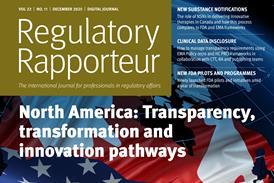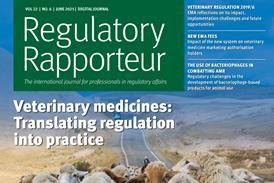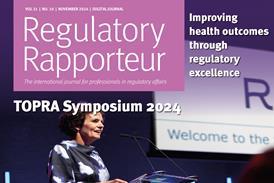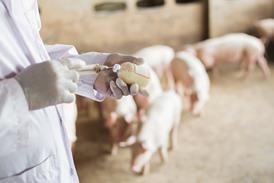
Agricultural and Veterinary (Agvet) chemical products are registered with the Australian Pesticides and Veterinary Medicines Authority (APVMA) before they can be supplied in Australia. A mandatory scheme was introduced by the Australian government in 1993 to transfer Agvet chemical products from the State-based system to a national authority under the ’National Registration Scheme’ (NRS). Later in 2013 the Amendment Act 2013 was introduced by Parliament to ensure approved Agvet chemical products do not pose unmanageable risks to agriculture, animals, human health or the environment post-approval. Following the introduction of the Amendment Act 2013, changes to existing Agvet chemicals legislation were sanctioned, including the re-approval of active constituents and re-registration of products. These changes were originally expected to come into effect on 1 July 2014, but following changes in Government, this update to legislation was repealed by the Agricultural and Veterinary Chemicals Legislation Amendment (Removing Re-approval and Re-registration) Act in 2014. Therefore, products already on the market are not reconsidered unless new scientific data demonstrates harm to the wellbeing of Australia’s environment, agriculture, animals and/or humans.
Licence notice
Copyright © 2015-2023 The Organisation for Professionals in Regulatory Affairs Ltd. T/A Regulatory Rapporteur − All Rights Reserved. This work is licensed to Syed Ziauddin Hashmi for the purposes of academic and personal reasonable use only.
Notwithstanding this licence, no part of materials published in Regulatory Rapporteur may be reproduced without the express written permission of the publisher.
As a general rule, permission should be sought from the rights holder to reproduce any substantial part of a copyrighted work. This includes any text, illustrations, charts, tables, photographs, or other material from previously published sources.
To obtain permission(s) to re-use content published in Regulatory Rapporteur please email publications@topra.org.
To join TOPRA please click here.
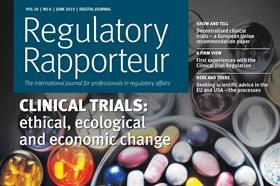
Regulatory Rapporteur
June 2023 | Volume 21 | No.6
Introduction
The National Registration Scheme was enacted for Agvet chemical products in 1993, to ensure that products were safe for agriculture, animals, humans and/or the environment. Historically, a certificate of clearance (CoC) was issued by the National Registration Authority for Agricultural and Veterinary Chemicals (NRA) to allow an Agvet chemical product to transition from State-system to the NRA and therefore available for sale. The CoC was an interim measure (between 1993 to 1994) for the transition to the national system as administered by the NRA. under the Section 3 of Agvet Chemicals Act 1988.[1]
In 1993, the regulation of these products transitioned to a national authority (NRA) which required a description of their use for specified purposes and conditions before issuance of a CoC.[2] Subsequently, a certificate holder could update relevant details (eg., formulation, label) required to be on the register for the product. With the introduction of the new authority, and under a federal system, the Commonwealth Government now regulates the supply of Agvet chemical products, making individual states[3] and territories responsible for regulating the use of Agvet chemical products after retail sales. The regulatory framework for managing agricultural chemicals and veterinary medicines is referred to as the National Registration Scheme for Agricultural and Veterinary Chemicals (NRS). Under the NRS framework, the federal APVMA is now responsible for the regulation and control of Agvet chemicals.
According to a Productivity Commission report of July 2008, over 5,000 of the 6,500 Agvet chemical products in Australia were registered under the previous arrangements – Agvet Chemical Act 1988 – which often involved less rigorous assessments, some of which ultimately dated back to the 1950s.[4] In May 2013, the Parliamentary Secretary for Agriculture, Fisheries and Forestry informed the House of Representatives that the authority estimates that more than 9,000 of the products currently available contain active ingredients grandfathered into the national registration scheme when it commenced under Labor in 1993.[5]
Under section 17 of the Agvet Chemicals Act 1988, all products in the state system were subject to reconsideration of clearance. Therefore, many Agvet products approved for use today contain chemicals that have not been re-examined, even against the 1988 Act. It also follows that updating product labels from a state-based system to the national agency under different livery and decades of use provides no guarantees of their safety.
This article describes the failure of the reconsideration of Agvet chemicals described under legislative clauses available both under the state-based legislation and national registration authority, and a portrayal of apparent information gaps. It argues for a systematic registration overhaul to ensure the safety of the use of Agvet chemical products in Australia.
Registration agency
The Agricultural and Veterinary Chemicals Act 1994[6] made provision for the evaluation, registration and control of Agvet chemical products by the National Registration Authority for Agricultural and Veterinary Chemicals (NRA). In 2003, the NRA changed its name to the Australian Pesticides and Veterinary Medicines Authority (APVMA). APVMA’s[7] jurisdiction is defined in the Agricultural and Veterinary Chemicals Code Act 1994 (the Agvet Code 1994) and the Agricultural and Veterinary Chemicals Code Regulations 1995 (the Agvet Regulations 1995).[8] The APVMA regulates Agvet products by:
- Approving active constituents and registering products.
- Reconsidering actives and products when new scientific information emerges that suggests a change in the risks to human health, the environment, animal or crop safety, or trade.
- Administering a permit scheme for the legal use of chemicals in ways contrary to the label instructions, or the limited use of unregistered chemicals.
- Licensing the manufacture (producer or production site) of chemical products.
- Conducting compliance and enforcement activities associated with the sale, supply, import, export, labelling, packaging, storage and advertising of Agvet products.
- Enforcing compliance with the Agvet Code 1994 (as set out in the schedule to the Agvet Regulations 1995) in partnership with law enforcement, the judiciary, and citizen, state and territory government agencies.[9]
Registration system
Applications are made to the APVMA to either register new active constituents or products, or to submit variations to registered products or labels throughout their lifecycle. The registration system requires applicants to provide dossiers containing information on product composition, physical, chemical and biological characteristics, and data relating to quality, safety, and efficacy. An application must be supported by information that allows the APVMA to determine whether it meets the applicable statutory criteria before it can be registered.[10] Under the post-registration activities, APVMA has instituted voluntary programmes to support the existing system of regulatory control, such as:
- The adverse experience reporting programme commenced for veterinary medicines in 1995 and agricultural chemicals in 2003, recognising that a new product is released with limited data on its known potential adverse effects, so post-registration reporting is of use to better understand the adverse effect profile of the product.
- Third-party monitoring of veterinary chemical compliance to good manufacturing practice (GMP).
- Voluntary reporting of contradictory information (ie., information that shows the product may not meet safety or efficacy or trade criteria) entered in the register for the product.
Re-approval and re-registration
Whenever the Australian Government seeks to create new or amend existing legislation, individual Ministers are responsible for decisions made by their Departments. The Minister of Agriculture was therefore responsible for proposing the Agricultural and Veterinary Chemicals Legislation Amendment Bill 2013. The rationale for introducing the Amendment Bill in 2013 was to correct perceived failures of the national registration scheme, in which there was insufficient information available (compared to currently enforced legislation) to the regulator to make an informed judgement. This has affected more than 5,000 registered Agvet products which have been in circulation since 1993.
Consistent with policy intent[11] and for implementation of changes to the legislation, the Commonwealth Government committed $8.75 million to fund the reforms introduced in the Agvet Amendment Bill 2013.[12] The proposed updates to legislation included a mandatory scheme for the re-approval of active constituents and re-registration of products. It reasoned that products already registered in Australia should undergo re-approval or re-registration to ensure that there are valid scientific reasons to maintain or alter the conditions under which the original registration was granted. The key benefit of this requirement was that it would protect human health and the environment by implementing a systematic process to ensure that active constituents or products carry only the information consistent with the Agvet Code legislative criteria. The Parliamentary Secretary for Agriculture, Fisheries and Forestry5 also stated that:
———♦———
“The government accepts that a long history of safe use counts in favour of keeping a tried-and-true chemical on the market. After looking at the simple application, where there are no reasonable grounds to believe a chemical is not safe the chemical will be reregistered without further obligations on the chemical company. The chemical company may choose not to reregister a chemical rather than have its safety examined. It is their choice. That is a commercial decision. The government does not promote particular products over others.”
———♦———
During the debate in Parliament, the Opposition argued that the amended legislation undermined the autonomy of the APVMA. Despite this, the Bill was passed (Amendment Act 2013). It defined broad legal and policy principles of re-approval and the re-registration for Agvet chemicals to come into effect on 1 July 2014.
Under the proposed scheme, products were to be re-registered every seven to 15 years, allowing the relevant particulars, conditions of registration, or label to be varied if required. The APVMA would re-approve and re-register unless there were reasonable grounds that any information entered in the product’s register failed to meet one or more of the following:
- safety criteria,
- efficacy criteria,
- trade criteria.
Removing re-approval and re-registration
In 2014, the incoming Government’s deregulation agenda sought to ease the regulatory compliance costs on the Australian economy by $1billion per year.[13] The Government introduced a new Agricultural and Veterinary Chemicals Legislation Amendment (Removing Re-approval and Re-registration) Bill 2014 to implement this election commitment by removing re-registration-related clauses and commencing the Amendment Act on 1 July 2014.[14]
Before the introduction of the Amendment Act 2013, once an active constituent was approved, it remains approved and available for use in finished products. Conversely, when a product is registered, the registration holder was required to pay the APVMA an annual licence renewal fee. With the introduction of the Amendment Act 2013, both active constituent and product approval and registration will ‘expire’ on a particular date. Therefore, the approval holder/registration holder was required to apply for “re-approval” and “re-registration”.
The Amendment Act 2014, introduced that:
- Active constituent approvals will not expire.
- The approval of active constituents will continue, so long as they are not cancelled by the approval holder or the APVMA.
Under the new Act, products would have an indefinite period of registration as long as the renewal fee was paid.[15]
During the second reading of the Agvet Chemicals Amendment Bill 2014, the Minister for Agriculture[14] also stated that:
———♦———
“To give the opportunity for the APVMA to confirm that chemical products supplied to the market are the same as the product evaluated and registered by the APVMA, this bill includes amendments that improve the ability of the APVMA to require a person who supplies an Agvet chemical product in Australia to provide information (for example, a chemical analysis) about the product they are supplying. The APVMA is to be able to require a chemical analysis of the product and for the results of the analysis to be provided to the APVMA. The power is to apply only if the APVMA considers the information is necessary to protect human, animal and environmental health, and safety or protect trade.”
———♦———
Similar sentiments were included in the March 1995 version (C2004C01729) of the Code Act 1994 as it recognises:
- That the protection of the health and safety of human beings, animals and the environment is essential to the well‑being of society and can be enhanced by putting in place a system to regulate agricultural chemical products and veterinary chemical products.
- That the principle of ecologically sustainable development requires a regulatory system that is designed to ensure that the use of such products at the present time will not impair the prospects of future generations.
Perpetual registration
After removing the re-registration requirement, there appears to be no process for assessing ongoing compliance with Agvet Code legislative criteria for more than 5,000 of the products currently available under the national registration scheme. Australia’s participation in several international treaties may result in the withdrawal of the previously approved chemical product from the market where the APVMA has not specifically assessed human, animal or environmental health.[16]
With indefinite registration of products, the holder is subjected to a limited or no direct mandatory obligation.[17] Without a legislative responsibility on the registration holder to re-register, indefinite registration may have a consequential adverse impact on the product. By contrast, the same product in New Zealand would be subjected to a registration procedure every five years, so long as no other changes to the product registration are approved. In Australia, this is rationalised as an “administrative matter.”[18],[19]
According to the Amendment Act 2014, Agvet products are required to be renewed by each year unless renewed for a five-year period previously, in which case it will be required to be renewed in the year the five-year period expires. As per an administrative process, an email advising that applications are open to renewing product registrations at the beginning of April each year. There are no additional information requirements on the online application for the registration renewal form the APVMA is obligated to renew, and no quality, efficacy or safety issues are considered.
Appraisal of changes to the legislation
In 2017, it was reported by the APVMA that since assuming the responsibility for over 5,000 chemical registrations granted under the state-based system,[20] it had to date completed reviews for 94 chemicals, which is perhaps not surprising since there is no-requirement for re-registering under the 2014 Act.[21] With new information and data submitted by the holder, the APVMA has instituted a risk-based ‘work plan’ for another 25 chemicals. Although this risk-based approach would have introduced additional costs to the holders, it would have benefited the broader Australian community through instilling confidence in the integrity of the national registration authority.[12]
According to the recommendations of the Independent Review of the regulatory framework[22], APVMA should be required to commence a review of substances through one of three mechanisms in the future:
- Under the current legislation, APVMA can initiate a review.
- A legislated trigger that could be based on a comparable international regulator cancelling use of a product.
- On referral by the Commissioner for Pesticides and Veterinary Medicines.
It is assumed that these recommendations provide an effective way of ensuring that a marketed Agvet chemical product continues to meet the safety standards associated with the original authorisation.[20]
Under the Amendment Act 2014, the Minister is required to ensure a review of the Agvet legislation and regulations at least every ten years. An independent review was conducted in 2019.[23] Where it was stated the enactment and repeal of the re-approval and re-registration clauses were outside of the scope of review. This review concluded that: “While the 2014 reforms have delivered some efficiencies, more reform is required to simplify the legislation. ACIL Allen maintains its view from the 2017 review of International IP & Registration Arrangements for the Regulation of AgVet Chemicals that the legislation and regulations need to be simplified and rewritten. It may therefore be beneficial to include a comprehensive examination of the entire agvet framework in the near future.”
In 2019, the Senate Rural and Regional Affairs and Transport Legislation Committee made no comments because the provision of the re-approval of active constituents and re-registration of products were introduced but never implemented.
The need for change
The consequence of eliminating the legislated requirement of re-approval or re-registration is that the APVMA is not obligated to ask the holder for information for an assessment of whether the product on the market is the same as that evaluated and approved at the time of its original registration. Moreover, the GMP audits for the APVMA are conducted by third-party auditors. Now the APVMA can exercise its powers only if it considers the information necessary. It cannot independently form an ‘opinion’ about a product or have laboratory facilities to conduct product testing to verify if the registered product can impact humans, animals and environmental health. In the second reading of the Amendment Bill 2014 the Minister of Agriculture stated that this provision is not effective as it applies only if the APVMA has a reasonable suspicion that the product does not meet APVMA requirements. It is not feasible for APVMA to develop this suspicion while the person still has possession of the substance, due to changes in the way chemicals are manufactured and sold since the Agvet Code was drafted. Conversely, there was no mention of alternate plans for more than 5,000 of the currently available products which abide by the national registration scheme implemented by the NRA in 1993.
Addressing the critiques
It could be argued that the re-registration requirement would divert funds from critical research and development of new Agvet products. However, what is most crucial is that the re-registration of products is often viewed as offering minimal benefit when it comes to product safety assurance. The other perceived issue is the scheduling of re-registration rather than risk-based assessment, as this would impose a substantial regulatory burden on the APVMA.
Primarily, the burden of proof for safety, including the supporting data, resides with the holder. The holder typically finds the most cost-effective way of achieving the required outcome and continues business as usual. Since APVMA is not actively monitoring potential harm to the health of the environment due to the long-term use of Agvet chemical products, it is important to stress that the Amendment Act 2014 also failed to mitigate risks by apportioning the responsibility where it is due.
Case study − A story of a mercury-containing product
In the principles of regulatory science, the protection of the health and safety of human beings, animals and the environment are essential for the well‑being of society and can be enhanced by a registration system that regulates Agvet chemical products. Therefore, the principle of ecologically sustainable development also requires a registration system which is designed to ensure that the use of Agvet chemical products at the present time will not impair the prospects of future generations.
Despite having a chemical review programme[24] since 1995, these issues were discussed in Parliamentary Committee on 9 August 2021[25] when it was revealed that the regulator did not manage the reconsideration of Agvet chemicals. The report stated that an agricultural product containing mercury was a repack of an existing registered product previously approved under the state-based registration system. Both were non-compliant with the current legislative criteria because there was no data on environmental toxicity. The original decision meant that mercury continued to be used until 2021.[26]
The clearance process from state responsibility to the national scheme was governed by the Agvet Chemicals Act 1988. Under clause 3 of the Act, the Australian Agricultural and Veterinary Chemicals Council (AAVC) was established for granting or refusing clearance. The AAVC[27],[28] clearance of chemicals was a precursor to registration by the regulator. Interestingly, the website states that in July 1992, the AAVC recommended revoking the clearances for mercury fungicides because of environmental concerns.[29] Although Australia had now moved to phase out most mercury-containing products, their decision to grant an exception to one product in the agricultural industry came at a cost to ecosystems. On February 1994, the NRA Board revoked the clearances for mercury fungicides, for all uses except sugarcane, from December 1994 (National Archives of Australia - Personal Communication NAA1000355298).
The Department of Environment report in 2016[30] showed that while alternative products were available, the mercury-containing fungicide used from 2011 to 2014 was 44,000 litres per year, equating to 5,280 kg of elemental mercury being released into the Australian environment each year. Subsequently, in 2018[31] another report recommended that the APVMA de-register the mercury-containing pesticides so that they were no longer manufactured or imported for sale in Australia. The Australian Parliamentary papers stated that in 2017-18 the run-off from fungicide treatment was 4.3 tonnes of mercury into the environment.
According to the Australian Competition & Consumer Commission (ACCC), Government agencies are responsible for monitoring and regulating the safety of products. In the product safety provisions of the Australian Consumer Law,[32] the Commonwealth Minister may exercise its powers to prevent or reduce the risk of injury to any person. However, the powers to regulate consumer affairs are not suited to addressing chemical safety risks and do not extend to addressing land destruction or environmental protection from the use or misuse of chemicals. In recognition of the specialist mandate of the APVMA, the ACCC does not generally take action on Agvet products (personal communication). By inference, product registration was maintained when reports of environmental problems emerged.
The regulatory authority assumed the responsibility and granted a special exemption for this agricultural product that contained mercury.[26] During this time, the product remained in use because it was commercially available from the registration holder. However, both the approval holder of the active ingredient and the registration holder of the product became passive observers, leading to a diffusion of responsibilities.
Conversely, if the responsibility of demonstrating compliance with the requirement of protecting the environment was assigned to the approval/registration holder the active constituent and the product could have been voluntarily withdrawn decades ago.
International perspective on better regulation of Agvet chemicals
The Schedule 2 re‑approvals and re‑registrations in the Agricultural and Veterinary Chemicals Legislation Amendment Act 2013 was a principles-based legislation which relied on the holders to articulate the outcomes to be achieved by the APVMA. It also fixed the minimum common standard to achieve compliance across the Agvet chemicals industry.
According to the Australian Government’s response[33] to the Productivity Commission inquiry into the regulation of Agvet chemicals, the APVMA should use data and assessments of Agvet chemicals from comparable international regulators. This was reflected in an internal direction to the APVMA staff to use international assessment information to improve the efficiency and timeliness of APVMA’s assessments. In addition, the APVMA has work-sharing arrangements to register products with several partner agencies under the Global Joint Reviews.[34] The same products are available globally, and the international counterpart regulators[35] have a system for periodically re-assessing the risk associated with the regulated products. Conversely, in Australia, the regulatory framework is such that there is no equivalent legislative trigger for the APVMA for re-registration once a product is registered. After removing the requirement of re-registration from the regulatory system, the APVMA is out-of-sync with its global partners.
Conclusion
For over a century, agricultural produce and animal production have been the backbone of rural and regional Australia. If there is no legislated obligation on the holder to comply with the safety requirements for their product, this has the potential to erode confidence in registered products. In this regard, the bulk of Agvet products are consumed in rural regions and their productivity has a direct impact on the national economy. The panel working on the review of the Regulatory System for Agvet chemicals[22] has identified that no national monitoring programme exists for pesticides in waterways and soils in regions with intensive Agvet chemical use. Therefore, the prosperity of the environment for agricultural and animal sectors should be supported by the registration holders investing in the safe use of their products.
Agvet chemicals are vulnerable to safety concerns for the animals, environment and public because some were introduced in the 1950s. These products are still registered by the APVMA without any regular oversight. Additionally, removing the re-registration scheme has deprived the APVMA of the opportunity to confirm that chemicals supplied to the market are the same, better or, more importantly, safer. By reinvigorating the registration of Agvet chemicals, a product could be voluntarily withdrawn due to public health concerns before harm could occur. Theoretically, the APVMA could also identify data gaps within restricted-use products.
With the high global demand for Australia’s agricultural produce and animal products, re-approval and re-registration in the legislation should not be considered restrictive. Instead, it is an enabling license based on meritorious evaluation. When it comes to marketing chemicals, it is in the national interest to give power to the regulator to re-approve an active constituent and re-register a product to strengthen the safety of the environment, animals and humans.
This will reassure citizens that registered products in Australia do not pose undue safety risks to humans, animals, and the environment. Ultimately, this peace of mind could not be more necessary.
References
[1] Federal Register of Legislation. Agricultural and Veterinary Chemicals Act 1988 (No. C2004C01723). https://www.legislation.gov.au/Details/C2004C01723
[2] Commonwealth of Australia Gazette, Agricultural and Veterinary Chemicals (7 June 1994). https://trove.nla.gov.au/newspaper/page/27353588
[3] Victorian Legislation. Agricultural and Veterinary Chemicals (Control of Use) Act 1992 (No. 46/1992, V. 058) https://www.legislation.vic.gov.au/in-force/acts/agricultural-and-veterinary-chemicals-control-use-act-1992/058
[4] Australian Government. Productivity Commission. Chemicals and Plastic Regulations. Productivity Commission Research Report. (July 2008) Chapter 8: Registration of agricultural and veterinary chemical products. https://www.pc.gov.au/inquiries/completed/chemicals-plastics/report/chemicals-plastics-regulation.pdf
[5] Commonwealth of Australia. Parliamentary Debates. ((Wednesday, 15 May 2013). The Honourable Sid Sidebottom MP (Braddon) Parliamentary Secretary for Agriculture, Fisheries and Forestry, House of Representatives. https://parlinfo.aph.gov.au/parlInfo/genpdf/chamber/hansardr/be0df22c-0b6f-4a7b-a517-08bec7742457/0120/hansard_frag.pdf;fileType=application%2Fpdf
[6] Commonwealth Consolidated Acts. Agricultural and Veterinary Chemicals Act 1994. http://classic.austlii.edu.au/au/legis/cth/consol_act/aavca1994359/
[7] Australian Government. Australian Pesticides and Veterinary Medicines Authority Celebrating 25 years. (June 2018) https://apvma.gov.au/sites/default/files/publication/31456-apvma-timeline_poster_final.pdf
[8] Australian Government. Department of Agriculture, Fisheries and Forestry. Agricultural and Veterinary Chemicals Code Act 1994 (https://www.legislation.gov.au/Details/C2022C00347); Agricultural and Veterinary Chemicals Code Regulations 1995 (http://classic.austlii.edu.au/au/legis/cth/consol_reg/aavccr1995491/)
[9] Australian Government. Australian Pesticides and Veterinary Medicines Authority. Use of agvet chemicals in Australia. (October 2022) https://apvma.gov.au/node/15891
[10] Australian Government. Australian Pesticides and Veterinary Medicines Authority. (1 March 2021). Statutory criteria. https://apvma.gov.au/node/625
[11] Australian Government. Department of the Prime Minister and Cabinet. The Office of Impact Analysis. (29 November 2011). Better Regulation of Agricultural and Veterinary Chemicals - Regulation Impact Statement - Department of Agriculture, Fisheries and Forestry. https://obpr.pmc.gov.au/published-impact-analyses-and-reports/better-regulation-agricultural-and-veterinary-chemicals
[12] Parliament of Australia. Parliamentary Business. Agricultural and Veterinary Chemicals Legislation Amendment Bill 2013. (Parliament No. 43). https://www.aph.gov.au/Parliamentary_Business/Bills_Legislation/Bills_Search_Results/Result?bId=r4941
[13] Australian Government. The Honourable Josh Frydenberg MP, Parliamentary Secretary to the Prime Minister. Regulator Performance Framework. https://www.aer.gov.au/system/files/Australian%20Government%20-%20Regulator%20performance%20framework%202014.PDF
[14] Parliament of Australia. Bills. The Honourable Barnaby Joyce MP (New England) Minister for Agriculture and Deputy Leader of The Nationals, (Wednesday, 19 March 2014). Agricultural and Veterinary Chemicals Legislation Amendment (Removing Re-approval and Re-registration) Bill 2014. Second Reading. https://parlinfo.aph.gov.au/parlInfo/search/display/display.w3p;query=Id:%22chamber/hansardr/fc34435e-5f7a-4507-bac8-a38614e5fd1e/0030%22; The Amendment Act 2014 (No. C2014A00091) https://www.legislation.gov.au/Details/C2014A00091
[15] Zanker M and Sapountsis J (2 September 2014) Changes to agvet chemical legislation. Davies Collison Cave, News & Insight. Additional legislative reforms simplify agvet chemical renewals and approvals. https://dcc.com/news-and-insights/additional-legislative-reforms-simplify-agvet-chemical-renewals/
[16] Parliament of Australia. Parliamentary Business. Minamata Convention on Mercury. https://www.aph.gov.au/Parliamentary_Business/Committees/Joint/Treaties/MinamataConvention
[17] Australian Government. Australian Pesticides and Veterinary Medicines Authority. Regulatory Operations. Responsibilities of holders. (2 March 2021). https://apvma.gov.au/node/67
[18] New Zealand Government. Ministry of Primary Industries. (September 2017) Changes to registration renewal. https://mpi.govt.nz/dmsdocument/21731-changes-to-acvm-registration-renewal
[19] Australian Government. Australian Pesticides and Veterinary Medicines Authority. Registrations and Permits. (10 March 2021) Renew a registration. https://apvma.gov.au/node/1085
[20] Australian Government. Australian Pesticides and Veterinary Medicines Authority. Regulatory Operations. (21 September 2017) History of the Chemical Review Program. https://apvma.gov.au/node/10971
[21] Australian Government. Australian Pesticides and Veterinary Medicines Authority. Regulatory Operations. Listing of chemical reviews. https://apvma.gov.au/chemicals-and-products/chemical-review/listing?field_cr_status_tid=5730
[22] Australian Government. Department of Agriculture, Fisheries and Forestry. Matthews K. Astin A. Corbett M. and Suann C. (28 May 2021). Final Report of the Independent Review of the Pesticides and Veterinary Medicines Regulatory System in Australia https://www.agriculture.gov.au/sites/default/files/documents/agvet-chemicals-review-final-report_0.pdf
[23] ACIL Allen Consulting. Report to Department of Agriculture. (Dated: 19 June 2019) Review of Agricultural and Veterinary Chemicals Legislation Amendment Act 2013. Operation of the Amendments. https://www.agriculture.gov.au/sites/default/files/sitecollectiondocuments/ag-food/agvet/amendment-act/acil-allen-consulting-review-agvet-amendment-act-2013-final-report.pdf
[24] Commonwealth of Australia Gazette, Agricultural and Veterinary Chemicals. National Registration Authority for Agricultural and Veterinary Chemicals (NRA No. 12). (5 December 1995) Existing Chemical Review Program Data Call-in Procedure. https://trove.nla.gov.au/newspaper/page/27353940
[25] Parliament of Australia. Parliamentary Business. (09 Aug 2021). Chapter 3. Minamata Convention on Mercury. https://www.aph.gov.au/Parliamentary_Business/Committees/Joint/Treaties/MinamataConvention/Report_197/section?id=committees%2freportjnt%2f024770%2f77580
[26] Commonwealth of Australia Gazette, Agricultural and Veterinary Chemicals Code Act 1995. National Registration Authority for Agricultural and Veterinary Chemicals. Notice of cancellation of registration of agricultural products containing mercury. https://trove.nla.gov.au/newspaper/article/248112449/27353810
[27] Doust T. A. Regulation of veterinary chemicals in Australia. Aust Vet J 1994; 71:12:407-9. https://doi.org/10.1111/j.1751-0813.1994.tb00954.x
[28] Neumann F. G. Regulation and usage of insecticides in Australian forestry from the mid-1960s to 1990, Australian Forestry, 1992; 55:1-4, 48-64, DOI: https://doi.org/10.1080/00049158.1992.10676098
[29] Australian Government. Australian Pesticides and Veterinary Medicines Authority. (7 April 2022) Regulatory Operations. Mercury Fungicides. https://apvma.gov.au/node/75941
[30] Australian Government. Department of the Environment and Energy. National Phase down of Mercury, Ratification of the Minamata Convention on Mercury, Final Regulation Impact Statement – Exposure Draft (December 2016). https://www.dcceew.gov.au/system/files/consultations/4068cac4-a2ba-4036-a9e0-7bdee4f558fd/files/final-report-cost-benefits-mercury.pdf
[31] Australian Government. Department of Environment and Energy. (June 2018). Costs and benefits of Australia phasing down mercury. https://www.dcceew.gov.au/sites/default/files/documents/final-cba-report-mercury-revised-version.pdf
[32] Federal Register of Legislation. Competition and Consumer Act 2010 (No. 51, 1974). https://www.legislation.gov.au/Details/C2022C00326
[33] Australian Government. Department of Agriculture and Water Resources. (January 2019). Productivity Commission Inquiry into the Regulation of Australian Agriculture: Australian Government response, Canberra. CC 4.0. https://www.pc.gov.au/inquiries/completed/agriculture/agriculture-government-response.pdf
[34] Australian Government. Australian Pesticides and Veterinary Medicines Authority. (22 March 2022) Use of international assessments Including Work-Sharing. https://apvma.gov.au/node/98241; (18 October 2018) Collaborative and international assessments, including work-sharing. https://apvma.gov.au/node/1053
[35] European Union. Regulations 1107/2009, Renewal of approval Articles 14 – 18, https://eur-lex.europa.eu/LexUriServ/LexUriServ.do?uri=OJ:L:2009:309:0001:0050:en:PDF; United States of America. Product Reregistration. Federal Insecticide, Fungicide, and Rodenticide Act (FIFRA) (1988); https://www.epa.gov/pesticide-reevaluation/reregistration-and-other-review-programs-predating-pesticide-registration; Government of Canada. Health Canada’s Pest Management Regulatory Agency. post-market re-evaluation program. https://www.canada.ca/en/health-canada/services/consumer-product-safety/pesticides-pest-management/public/protecting-your-health-environment/pesticide-registration-process/reevaluation-program.html



